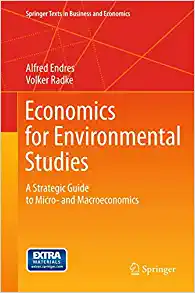Answered step by step
Verified Expert Solution
Question
1 Approved Answer
No explanation needed! QUESTION 1 The Required Reserves amount =: deposits*required reserve ratio required reserves/deposits deposits-loans deposits-excess reserves a&c 5 points QUESTION 2 To increase
No explanation needed!
QUESTION 1
- The Required Reserves amount =:
- deposits*required reserve ratio
- required reserves/deposits
- deposits-loans
- deposits-excess reserves
- a&c
5 points
QUESTION 2
- To increase lending capacity the Fed does all the following except:
- reduces the required reserve ratio
- increases the discount rate
- buys bonds
- all of the above
5 points
QUESTION 3
- A Fractional Reserve Systems means banks:
- allow borrowers to share loans
- list interest as fractions
- set aside a fraction of deposits
- require only a portion of loans as collateral
5 points
QUESTION 4
- Deposit to bank A = $600 and required reserves = .25 then cumulative change in transaction deposits = $:
- 480
- 600
- 2400
- 3000
5 points
QUESTION 5
- Deposit to bank A = $100 and deposit to bank B = $80, then:
- required reserves = .2
- deposit to bank C = $60
- cumulative change in transaction deposits = $320
- all of these
5 points
QUESTION 6
- Deposit to bank A = $600 and required reserves = .4 then cumulative change in transaction deposits = $:
- 240
- 360
- 900
- 1500
5 points
QUESTION 7
- A bond is sold for $1000 and pays $100 each year for a yield of 10%. An event causes this class of bonds to double in value but the bond still pays $100 yearly. The yield now is
- 1
- 5
- 10
- 20
5 points
QUESTION 8
- M1is _M2.
- bigger than
- smaller than
- equal to
- is sometimes bigger and sometimes smaller
5 points
QUESTION 9
- Money is:
- cash
- coins
- gold
- anything representing value
5 points
QUESTION 10
- Belowthe districts, the Federal Reserve has _ branches.
- 4
- 12
- 25
- 50
5 points
QUESTION 11
- Deposit to bank A = $100 and deposit to bank B = $70, then
- required reserves = .25
- deposit to bank C = $50
- cumulative change in transaction deposits = $333.33
- all of these
5 points
QUESTION 12
- The Federal Reserve's three monetary tools are all except:
- reserve requirement
- discount rate
- open market operation
- tax policy
5 points
QUESTION 13
- Banks create money, but this ability is NOT determined by popularity of:
- check writing
- lending
- borrowing
- bank regulation
- voting
5 points
QUESTION 14
- M2 is composed of all the following except:
- M1
- savings accounts
- money market mutual funds
- bonds
5 points
QUESTION 15
- Deposit to bank A = $600 and required reserves = .25 then deposit to bank B = $:
- 150
- 450
- 1800
- 2400
5 points
QUESTION 16
- Deposit to bank A = $100 and deposit to bank B = $50, then:
- required reserves = .2
- deposit to bank C = $40
- cumulative change in transaction deposits = $200
- all of these
5 points
QUESTION 17
- Deposit to bank A = $400 and required reserves = .2 then cumulative change in transaction deposits = $:
- 320
- 400
- 1600
- 2000
5 points
QUESTION 18
- A bond is sold for $500 and pays $50 each year in interest without any maturity date in sight. The yield is _ %.
- 1
- 5
- 10
- 20
5 points
QUESTION 19
- When money is deposited in a bank, most of this deposit is in turn:
- held in a bank'svaults
- held by the Federal Reserve
- taxed by gov.
- lent to a third party
5 points
QUESTION 20
- To decrease lending capacity the Fed:
- reduces required reserves ratio
- reduces discount rate
- buys bonds
- sells bonds
Step by Step Solution
There are 3 Steps involved in it
Step: 1

Get Instant Access to Expert-Tailored Solutions
See step-by-step solutions with expert insights and AI powered tools for academic success
Step: 2

Step: 3

Ace Your Homework with AI
Get the answers you need in no time with our AI-driven, step-by-step assistance
Get Started


